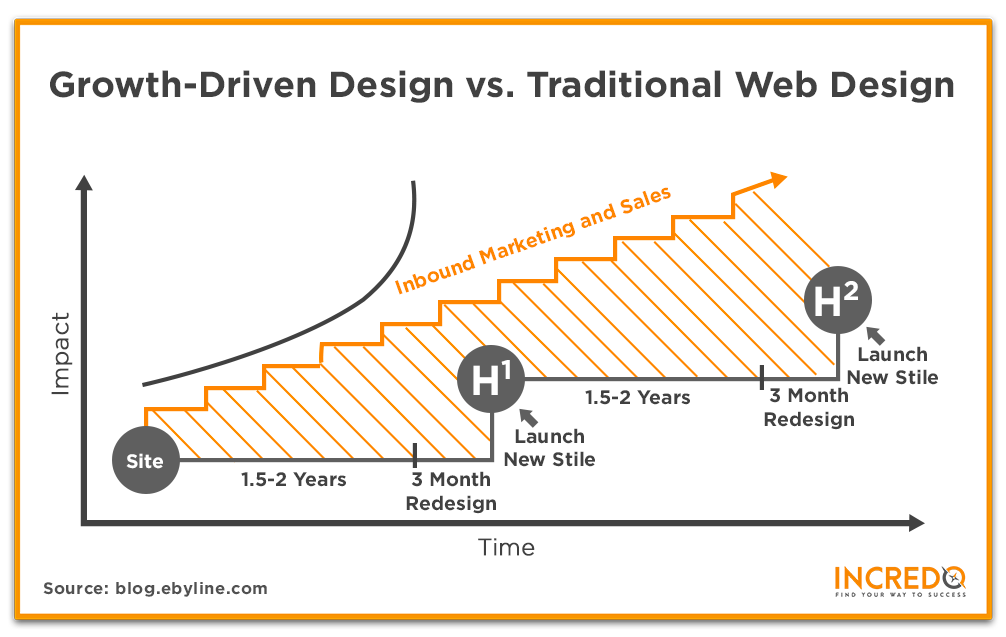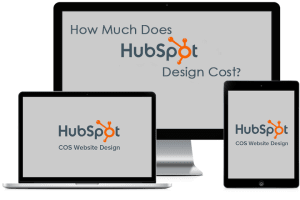Growth-Driven Design vs Traditional Web Design: What’s better for your business in 2021?

Growth-Driven Design vs Traditional Web Design: What’s better for your business in 2021?
Website design…
We will admit it, as you probably do to yourself, that designing a website is a pain in the neck. It is a necessary evil when it comes to any business. There is no escaping it – if you run a company, whether you are hocking wholesale chicken wings or are a DC lobbying firm, a website is the number one essential for establishing a market presence. But, designing (and redesigning) a website has typically sucked. Big time.
If you are an entrepreneur or CEO of a SaaS brand, an eCommerce company, or anyone who can benefit from an online presence, you will not be able to effectively design a top-notch, attractive website on your lonesome. You are going to need help.
Even if you have expert knowledge of coding, or possess graphic design savvy, you are likely (and should be) busy managing the day-to-day of your company, steering the ship through a tumultuous sea of competitors and ensuring that your customers are happy, eager to renew their subscription to your service or purchase your product.
Thus, designing a powerful website requires that you hire a clever team of graphic designers, code monkeys, content copywriters, and project managers to cover all of the design bases.
What does this all mean for you? Time and money. And, of course, you want your investment to be worth it. Afterall, isn’t your website important?
Indeed it is. A website’s quality – how attractive it looks, how swiftly it loads – is of paramount importance for consumers. According to a recent study by Adobe, almost 40% of potential customers will abandon a website if either the images do not load, or if the layout is unattractive or too long. In the same study, it was found that 68% of consumers find the overall design of a company’s website is important in their professional lives.
So, what do we mean by growth-driven design (GDD), and for that matter, what is perceived as traditional web design? And, after we explain the differences, which one should your SaaS company be investing in for the greatest ROI? Read on to find out…
 Traditional web design
Traditional web design
Unless your company has never created a website before, or had a team make one at your behest, you are already familiar with the traditional method of web design for SaaS companies, or any company selling goods or services.
It goes something like this:
- Your company has a service that you want to market online
- Brainstorming happens over designing the website, thinking about what your customers want to see
- The website is designed
- Site is tested, troubleshooting occurs
- When ready, the website is launched
- Post-launch, redesigns/updates occur every few years to remain market-current
It is pretty straightforward, right? This approach makes logical sense to most people (yours truly included). When it comes to frequency of redesigns, there is really no concrete rule, and updates obviously occur whenever you have something new to offer. As a general rule of thumb, in the traditional design camp, an entire overhaul and redesign of the website should happen every two years or so. But, like we said, there is no fixed rule.
Redesigning an entire website requires another investment of time and money, and is quite a headache. Too often, no matter how much you troubleshoot, there is a bug here or there that you have missed, resulting in content and display issues that deter customer conversions.
Redesigning takes a long time, because if you launch a shoddily designed website, you may as well give up altogether. 90% of customers feel brand distrust solely based up whether a website looks amatuer, or like it’s from 1996. So, the redesign process is another hefty investment using the traditional methodology. One does not desire to publish a less than perfect website.
But, how does one go about deciding what images to use, the layout, color scheme, content keywords, etc.? Basically, how does your company know what your target audience is looking for? Well, in the traditional web design structure, you pretty much take a stab in the dark and guess what your ideal consumer would want to experience. Traditionally, buyer personas are imagined, based upon your SaaS product and who you had in mind for purchasing it. Then, you design your website to suit them, and leave it be, until you redesign it years later in an effort to stay relevant.
With traditional web design, you are guessing what your target market’s customers will be in the future, designing your site to be on board with their present preferences, and hoping for the best to happen – conversions. To put it another way, it requires a leap of faith that your design and marketing teams are the sharpest on the planet, thus your site will be a success, now and tomorrow. Traditional design follows a “set it and leave it” mentality, that if you made a great website, it will not need any major improvements or updates – kind of a gamble, no?
That was the old-fashioned, traditional approach to web design. Now, let us go over GDD, and see whether it is better or not for your company’s purposes.
Growth-driven design
Traditional web design approach is rather risky when you think about it. Ask yourself – what if we didn’t get it right the first time (or the second, third…)? If all of that time and money was spent on designing a website that does not connect with and engage your target audience, then it was simply a waste of your resources. We might not be best buddies with you and your team yet, but it is fairly safe to assume that you loathe waste as much as we do.
The main difference between traditional and GDD web design is that GDD emphasizes to continually learn, adapt, and cater your website to your target audience by identifying what they like. In place of guessing who your buyer personas are, you mitigate the risk of missing the mark by analyzing what works, what doesn’t, and modifying your site in perpetuity to include features that buyers want and need, and only what proves to convert visitors into leads and customers
When a company decides to implement GDD, they start with creating a launchpad website – the basic essentials of what buyers need from your company during their journey. A launchpad site operates by using the 80/20 rule: only the 20% of content and features that return 80% of a company’s revenue are featured at first. Then, as visitor and customer data is tracked, the site is improved accordingly.
GDD helps companies not only identify their target audience and what makes them tick, but because there is a cycle of user data monitoring, planning, and adjusting, it helps companies change their web design just as soon as their users’ preferences change, and keeps the marketing department informed with accurate, current data.
It’s a fact – customers change over time. Especially for newer enterprises, trends come and go and a company’s website needs to go with the flow, while retaining its existing customers. GDD stresses a few steps to effectively do this:
1. Reaching out to existing customers
2. Collecting data on their pain points, preferences, ages, geographic location, etc.
3. Forming assumptions based on the data, to direct web design and cater to the persona
4. Studying site-use metrics, to test whether improvements are working or not
GDD is cyclical, as it should never stop once it starts. Starting with the original prototype page, the launchpad, month after month as data is retrieved and personas are updated, the site is improved accordingly. If, for example, you are a younger SaaS company and looking to improve your website to increase conversions (and who isn’t?), GDD may be more than just something to consider.
Costs: GDD vs traditional
One of the primary reasons why there has been so much buzz in recent months over GDD is that designing a bare bones launchpad site is substantially more affordable, and quicker to launch, than a full-blown web redesign from the ground up. However, there is more than meets the eye at first glance concerning costs.
While a typical medium-sized SaaS business will spend $15,000-$100,000 on a full-fledged bells and whistles website, a launchpad is a fraction of the price (approximately half). However, the traditional approach, while hefty up front, is a one-time expense, except for when the site is redesigned after a year or two. Conversely, GDD requires data retrieval and analysis, metric monitoring, website coding, etc. Which, as these are happening month after month, require a few thousand dollars be budgeted to cover the costs of improvements.
So, GDD is costly year round, and can indeed cost a company more after 24 months than a one-shot redesign. However, depending on the efficacy of your team in collecting visitor customer data, the trial-and-error nature of GDD may indeed offset the costs when your revenue is increased, through greater conversions.
When you think about it, why wouldn’t you have increased conversions through GDD? Afterall, you are going straight to the source of your revenue – your customers – and discovering what they want, what their pain points are, and how you can solve them. Then, you are designing a site that will speak to the persona of others just like your customers, and repeating the cycle monthly.
Further, by factoring in how much swifter you can launch a launchpad site, rather than a full fledged website, you save several months of missing out on enhanced conversions, while customers wait and wait for a new site to launch.
The magic of GDD
In some limited cases, traditional will be the way to go for website design. However, in the majority of cases, we truly believe that the inherent costs of growth-driven design are offset by its efficacy in generating more conversions than traditional. For inbound marketing GDD is a natural fit, as you are retrieving data from your customers that informs your marketing and sales teams of where and to whom to digitally market.
In today’s digital landscape, people want more, newer, faster, etc. While GDD will not help you with purchasing more bandwidth if you have a slow-loading page, it will help you find the pulse of your target audience and convert a greater numbers of visitors. Contact Incredo if you’d like to learn more on how we can help your team design a kick-ass launchpad site using the GDD approach.
Tags:
Other
October 25, 2020



Comments